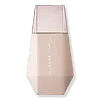What's inside
What's inside
 Key Ingredients
Key Ingredients

 Benefits
Benefits

 Concerns
Concerns

 Ingredients Side-by-side
Ingredients Side-by-side

Aloe Barbadensis Leaf Juice
Skin ConditioningMaltose
MaskingGluconolactone
Skin ConditioningGlycerin
HumectantCaprylyl/Capryl Glucoside
CleansingPropanediol
SolventSodium Benzoate
MaskingCaprylic/Capric Triglyceride
MaskingAgave Tequilana Leaf Extract
AstringentXanthan Gum
EmulsifyingChondrus Crispus Extract
Skin ConditioningPistacia Lentiscus Gum
MaskingHydrogenated Lecithin
EmulsifyingMica
Cosmetic ColorantCalcium Gluconate
HumectantBenzyl Alcohol
PerfumingEthylhexylglycerin
Skin ConditioningLithothamnion Calcareum Extract
Skin ConditioningBeta-Glucan
Skin ConditioningCaprylyl Glycol
Emollient1,2-Hexanediol
Skin ConditioningCitric Acid
BufferingSodium Hydroxide
BufferingBenzoic Acid
MaskingPhenethyl Alcohol
MaskingDehydroacetic Acid
PreservativeHibiscus Sabdariffa Flower Extract
Skin ConditioningPotassium Sorbate
PreservativeCI 77891
Cosmetic ColorantAloe Barbadensis Leaf Juice, Maltose, Gluconolactone, Glycerin, Caprylyl/Capryl Glucoside, Propanediol, Sodium Benzoate, Caprylic/Capric Triglyceride, Agave Tequilana Leaf Extract, Xanthan Gum, Chondrus Crispus Extract, Pistacia Lentiscus Gum, Hydrogenated Lecithin, Mica, Calcium Gluconate, Benzyl Alcohol, Ethylhexylglycerin, Lithothamnion Calcareum Extract, Beta-Glucan, Caprylyl Glycol, 1,2-Hexanediol, Citric Acid, Sodium Hydroxide, Benzoic Acid, Phenethyl Alcohol, Dehydroacetic Acid, Hibiscus Sabdariffa Flower Extract, Potassium Sorbate, CI 77891
Water
Skin ConditioningGlycereth-26
HumectantDimethicone
EmollientGlycerin
HumectantDipropylene Glycol
HumectantTriisostearin
Skin Conditioning1,2-Hexanediol
Skin ConditioningDipentaerythrityl Hexa C5-9 Acid Esters
Skin ConditioningBetaine
HumectantPhenoxyethanol
PreservativeIsodecyl Neopentanoate
EmollientSodium Hyaluronate
HumectantCetearyl Olivate
Caprylic/Capric Triglyceride
MaskingSynthetic Fluorphlogopite
Sorbitan Olivate
EmulsifyingHydroxyethyl Acrylate/Sodium Acryloyldimethyl Taurate Copolymer
Emulsion StabilisingMica
Cosmetic ColorantC14-22 Alcohols
Emulsion StabilisingAlumina
AbrasiveTocopheryl Acetate
AntioxidantSqualane
EmollientTromethamine
BufferingCarbomer
Emulsion StabilisingC12-20 Alkyl Glucoside
EmulsifyingPunica Granatum Pericarp Extract
Skin ConditioningPolysorbate 60
EmulsifyingTin Oxide
AbrasiveSilica
AbrasiveDisodium EDTA
Sorbitan Isostearate
EmulsifyingXanthan Gum
EmulsifyingOpuntia Tuna Fruit Extract
Skin ConditioningSilybum Marianum Extract
Skin ConditioningCI 77491
Cosmetic ColorantCI 77891
Cosmetic ColorantWater, Glycereth-26, Dimethicone, Glycerin, Dipropylene Glycol, Triisostearin, 1,2-Hexanediol, Dipentaerythrityl Hexa C5-9 Acid Esters, Betaine, Phenoxyethanol, Isodecyl Neopentanoate, Sodium Hyaluronate, Cetearyl Olivate, Caprylic/Capric Triglyceride, Synthetic Fluorphlogopite, Sorbitan Olivate, Hydroxyethyl Acrylate/Sodium Acryloyldimethyl Taurate Copolymer, Mica, C14-22 Alcohols, Alumina, Tocopheryl Acetate, Squalane, Tromethamine, Carbomer, C12-20 Alkyl Glucoside, Punica Granatum Pericarp Extract, Polysorbate 60, Tin Oxide, Silica, Disodium EDTA, Sorbitan Isostearate, Xanthan Gum, Opuntia Tuna Fruit Extract, Silybum Marianum Extract, CI 77491, CI 77891
Ingredients Explained
These ingredients are found in both products.
Ingredients higher up in an ingredient list are typically present in a larger amount.
1,2-Hexanediol is a synthetic liquid and another multi-functional powerhouse.
It is a:
- Humectant, drawing moisture into the skin
- Emollient, helping to soften skin
- Solvent, dispersing and stabilizing formulas
- Preservative booster, enhancing the antimicrobial activity of other preservatives
This ingredient is an emollient, solvent, and texture enhancer. It is considered a skin-softener by helping the skin prevent moisture loss.
It helps thicken a product's formula and makes it easier to spread by dissolving clumping compounds.
Caprylic Triglyceride is made by combining glycerin with coconut oil, forming a clear liquid.
While there is an assumption Caprylic Triglyceride can clog pores due to it being derived from coconut oil, there is no research supporting this.
Learn more about Caprylic/Capric TriglycerideCi 77891 is a white pigment from Titanium dioxide. It is naturally found in minerals such as rutile and ilmenite.
It's main function is to add a white color to cosmetics. It can also be mixed with other colors to create different shades.
Ci 77891 is commonly found in sunscreens due to its ability to block UV rays.
Learn more about CI 77891Glycerin is already naturally found in your skin. It helps moisturize and protect your skin.
A study from 2016 found glycerin to be more effective as a humectant than AHAs and hyaluronic acid.
As a humectant, it helps the skin stay hydrated by pulling moisture to your skin. The low molecular weight of glycerin allows it to pull moisture into the deeper layers of your skin.
Hydrated skin improves your skin barrier; Your skin barrier helps protect against irritants and bacteria.
Glycerin has also been found to have antimicrobial and antiviral properties. Due to these properties, glycerin is often used in wound and burn treatments.
In cosmetics, glycerin is usually derived from plants such as soybean or palm. However, it can also be sourced from animals, such as tallow or animal fat.
This ingredient is organic, colorless, odorless, and non-toxic.
Glycerin is the name for this ingredient in American English. British English uses Glycerol/Glycerine.
Learn more about GlycerinMica is a naturally occurring mineral used to add shimmer and color in cosmetics. It can also help improve the texture of a product or give it an opaque, white/silver color.
Serecite is the name for very fine but ragged grains of mica.
This ingredient is often coated with metal oxides like titanium dioxide. Trace amounts of heavy metals may be found in mica, but these metals are not harmful in our personal products.
Mica has been used since prehistoric times throughout the world. Ancient Egyptian, Indian, Greek, Roman, Aztec, and Chinese civilizations have used mica.
Learn more about MicaXanthan gum is used as a stabilizer and thickener within cosmetic products. It helps give products a sticky, thick feeling - preventing them from being too runny.
On the technical side of things, xanthan gum is a polysaccharide - a combination consisting of multiple sugar molecules bonded together.
Xanthan gum is a pretty common and great ingredient. It is a natural, non-toxic, non-irritating ingredient that is also commonly used in food products.
Learn more about Xanthan Gum